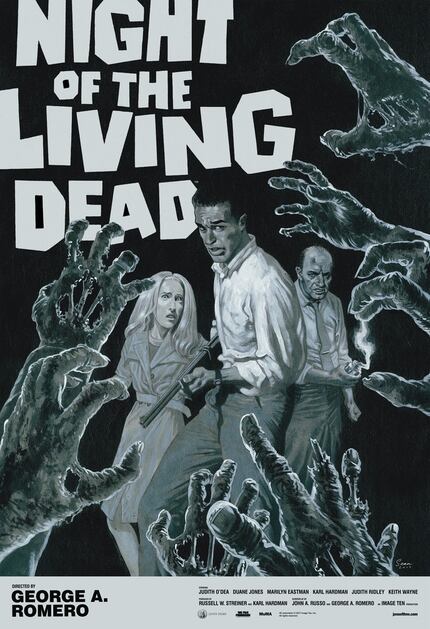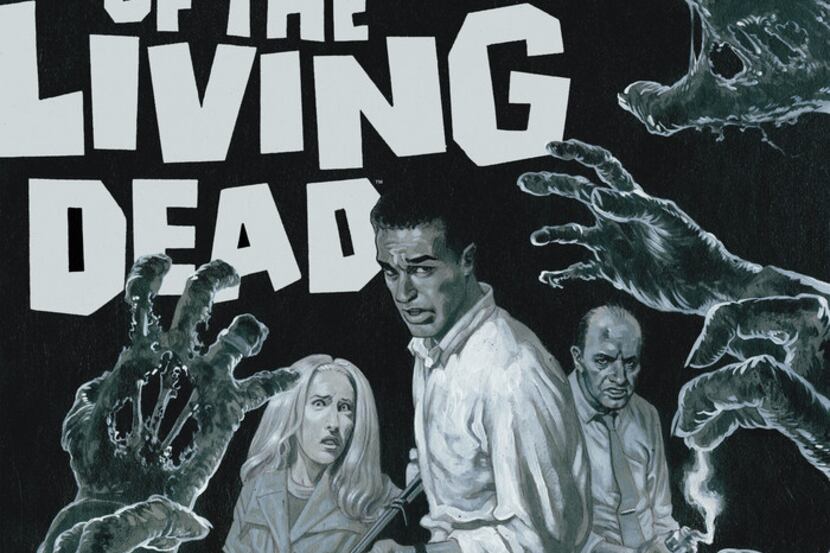Essential is a series by Dallas Morning News writers spotlighting timeless works of art and culture.
Essential Viewing: Night of the Living Dead (1968, directed by George Romero)
Before The Walking Dead, before 28 Days Later or World War Z, there was a bare-bones minimalist blood-chiller made by a band of movie newbies in Pittsburgh. Night of the Living Dead didn't just come out of nowhere; it stayed nowhere throughout its initial release 50 years ago this October. It was such a radical departure that nobody knew what to make of it. What on earth was this grisly piece of drive-in gore?
A cinema classic, that's what. It just took us a while to figure that out. There was a re-release the following summer, then a French release -- why do the French have such a nose for what we overlook? -- followed by another American re-release. By then it was 1970, and reality had more than caught up with the horrors of Romero's imagination.
Today, watching the restoration executed by the Museum of Modern Art and now available as a Criterion Collection Blu-ray, it's more tempting than ever to read Night in the context of American madness at the end of the '60s. We'll do just that in a moment. First, let's look at the film's visual impact, which is what makes it terrifying.
Romero shot Night of the Living Dead on a pittance, but vision doesn't cost money. The film's mastery of screen space is evident from the very first scene, which finds a brother and sister playfully bickering in a cemetery. Suddenly we catch a glimpse of a gaunt, slow-moving figure in the deep background. What, or who, is that? We find out soon enough. And by the way, he's hungry. The new restoration makes the black-and-white cinematography crisper than ever, especially that endless gray sky looking down on the horrors down below.
Most of the film takes place in an abandoned farmhouse, which Romero turns into a claustrophobic nightmare of skewed angles and dark shadows with a sense of composition that makes the space feel both big and constricting. It seems like an appropriate place for the world to end.
It was a bold move to cast a black man, Duane Jones, in the lead role. It was an even bolder move to make him the cool-headed man in charge of a house full of panicking white people fighting to keep an undead mob outside. Jones is the film's human core, the person we count on. That makes the movie's ending all the more devastating.

Even after 50 years it feels wrong to ruin that ending for anyone who has managed to never see Night of the Living Dead. We can say it's a dreadfully perfect capstone for a vision in sync with its ghastly times. Here we have children eating their elders (literally, not figuratively), and an armed redneck mob shooting first and asking questions later. We have a TV in the farmhouse, broadcasting news of the unthinkable.
"Mass murder by unidentified assassins," the bespectacled reporter tells us. Romero made Night of the Living Dead in the midst of a decade marked by assassinations, war and riots in the streets. In this context, munching on human viscera almost seems like a logical phenomenon.
The word "zombie" is never used in Night of the Living Dead, and Romero, who died last year at 77, never intended to create an enduring subgenre. But make no mistake: It all started here. Night also helped give rise to an angry new generation of horror filmmakers who infused their terror with realistic and often societal depravity. Tobe Hooper (The Texas Chainsaw Massacre), Wes Craven (The Last House on the Left) and David Cronenberg (Shivers) all owe something to Night of the Living Dead.
Romero kept up a steady diet of Dead movies over the years, some sublime (1978's Dawn of the Dead), others less so (Diary of the Dead). But this is the one that really matters. To watch it is to never forget it.

